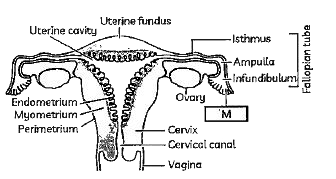Which one of the following is true about A.M. , G.M. and H.M. :
H.M. ≥ G.M. ≥ A.M.
A.M. ≥ H.M. ≥ G.M.
A.M. > G.M. > H.M.
G.M. > H.M. > A.M.
The correct Answer is:C
To determine the relationship between the Arithmetic Mean (A.M.), Geometric Mean (G.M.), and Harmonic Mean (H.M.), we can follow these steps:
Step 1: Define the Means
- Arithmetic Mean (A.M.): For two numbers a and b, the A.M. is given by:
A.M.=a+b2
- Geometric Mean (G.M.): For two numbers a and b, the G.M. is given by:
G.M.=√ab
- Harmonic Mean (H.M.): For two numbers a and b, the H.M. is given by:
H.M.=2aba+b
Step 2: Establish the Inequality
We need to establish the relationship among A.M., G.M., and H.M. for any two positive numbers a and b.
The well-known inequality states:
A.M.≥G.M.≥H.M.
Step 3: Prove the Inequality
1. A.M. vs G.M.:
- Using the Cauchy-Schwarz inequality, we can show that:
(a+b)2≥4ab⟹A.M.≥G.M.
2. G.M. vs H.M.:
- We can also show that:
1H.M.=a+b2ab≤1G.M.=2√ab⟹G.M.≥H.M.
Step 4: Conclusion
From the established inequalities, we conclude:
A.M.≥G.M.≥H.M.
Thus, the correct statement about A.M., G.M., and H.M. is that the Arithmetic Mean is the largest, followed by the Geometric Mean, and the Harmonic Mean is the smallest.
Final Answer
The correct option is:
C. A.M. ≥ G.M. ≥ H.M.
---
- Arithmetic Mean (A.M.): For two numbers a and b, the A.M. is given by:
A.M.=a+b2
G.M.=√ab
H.M.=2aba+b
We need to establish the relationship among A.M., G.M., and H.M. for any two positive numbers a and b.
A.M.≥G.M.≥H.M.
1. A.M. vs G.M.:
- Using the Cauchy-Schwarz inequality, we can show that:
(a+b)2≥4ab⟹A.M.≥G.M.
- We can also show that:
1H.M.=a+b2ab≤1G.M.=2√ab⟹G.M.≥H.M.
From the established inequalities, we conclude:
A.M.≥G.M.≥H.M.
Thus, the correct statement about A.M., G.M., and H.M. is that the Arithmetic Mean is the largest, followed by the Geometric Mean, and the Harmonic Mean is the smallest.
The correct option is:
C. A.M. ≥ G.M. ≥ H.M.
Topper's Solved these Questions
- SEQUENCE, SERIES & PROGRESSIONSBook:ARIHANT SSCChapter:SEQUENCE, SERIES & PROGRESSIONSExercise:EXERCISE LEVEL-1
Explore 43 Videos
- SEQUENCE, SERIES & PROGRESSIONSBook:ARIHANT SSCChapter:SEQUENCE, SERIES & PROGRESSIONSExercise:EXERCISE LEVEL-2
Explore 47 Videos
- SEQUENCE, SERIES & PROGRESSIONSBook:ARIHANT SSCChapter:SEQUENCE, SERIES & PROGRESSIONSExercise:INTRODUCTORY EXERCISE 18.2
Explore 40 Videos
- RATIO, PROPORTION & VARIATIONBook:ARIHANT SSCChapter:RATIO, PROPORTION & VARIATIONExercise:FINAL ROUND
Explore 16 Videos
- SET THEORYBook:ARIHANT SSCChapter:SET THEORYExercise:EXERCISE - 15 (LEVEL -1)
Explore 29 Videos
Similar Questions
Knowledge Check
Which one of the following statements about a linear S.H.M. is false ?
AIt is periodic motionBAcceleration of the particle is directed towards the extreme positionCThe body moves about the mean position along a straight lineDVelocity is zero at the extreme positionAbout 20 m above the earth, there is an ozone layer. Which one of the following statement about ozone and ozone layer is true?
AIt is beneficial to us as it stops U.V. radiationBConversion of O3 to O2 is an endothermic reactionCOzone has a triatomic linear moleculeDIt is harmful as it stops useful radiationWhich of the following is true about the mass of molecules m and urms?
Aurms∝mBurms∝1mCurms∝1/√mDurms∝1/m2
If 3 arithmetic means, 3 geometric means and 3 harmonic means are inserted between 1 and 5, then the cubic equation whose roots are first A.M., second G.M. and third H.M. between 1 and 5, is
View SolutionIn the electrochemical cell
H2(g),1 atm∣∣H+(1M)||Cu2+(1M)∣∣Cu(s), which one of the following statements is true?
View SolutionThe AM, HM and GM between two numbers are (144)/(15), 15 and 12, but not necessarily in this order then, HM, GM and AM respectively are :
View SolutionFor the electro chemical cell Pt(s)∣∣∣H21atm(g)∣∣∣H+(1M)∣∣∣Cu2+(1M)∣∣Cu(s), which one of the following statements are true ?
View SolutionThe harmonic mean of two numbers is 4. Their arithmetic mean A and the geometric mean G satisfy the relation 2A+G2=27. Find two numbers.
View Solution
